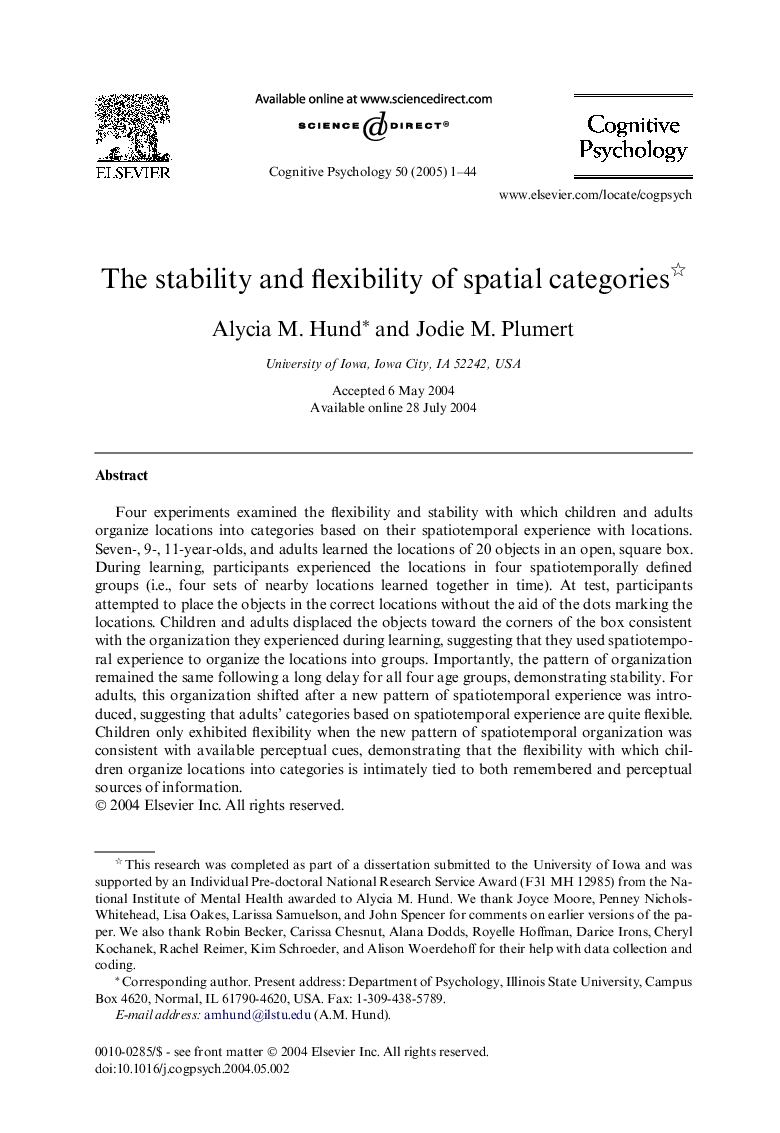| کد مقاله | کد نشریه | سال انتشار | مقاله انگلیسی | نسخه تمام متن |
|---|---|---|---|---|
| 10452468 | 919060 | 2005 | 44 صفحه PDF | دانلود رایگان |
عنوان انگلیسی مقاله ISI
The stability and flexibility of spatial categories
دانلود مقاله + سفارش ترجمه
دانلود مقاله ISI انگلیسی
رایگان برای ایرانیان
کلمات کلیدی
موضوعات مرتبط
علوم زیستی و بیوفناوری
علم عصب شناسی
علوم اعصاب شناختی
پیش نمایش صفحه اول مقاله

چکیده انگلیسی
Four experiments examined the flexibility and stability with which children and adults organize locations into categories based on their spatiotemporal experience with locations. Seven-, 9-, 11-year-olds, and adults learned the locations of 20 objects in an open, square box. During learning, participants experienced the locations in four spatiotemporally defined groups (i.e., four sets of nearby locations learned together in time). At test, participants attempted to place the objects in the correct locations without the aid of the dots marking the locations. Children and adults displaced the objects toward the corners of the box consistent with the organization they experienced during learning, suggesting that they used spatiotemporal experience to organize the locations into groups. Importantly, the pattern of organization remained the same following a long delay for all four age groups, demonstrating stability. For adults, this organization shifted after a new pattern of spatiotemporal experience was introduced, suggesting that adults' categories based on spatiotemporal experience are quite flexible. Children only exhibited flexibility when the new pattern of spatiotemporal organization was consistent with available perceptual cues, demonstrating that the flexibility with which children organize locations into categories is intimately tied to both remembered and perceptual sources of information.
ناشر
Database: Elsevier - ScienceDirect (ساینس دایرکت)
Journal: Cognitive Psychology - Volume 50, Issue 1, February 2005, Pages 1-44
Journal: Cognitive Psychology - Volume 50, Issue 1, February 2005, Pages 1-44
نویسندگان
Alycia M. Hund, Jodie M. Plumert,